
Research Article
Austin Diabetes Res. 2019; 4(1): 1020.
Medical Knowledge on the Prescription of Antibiotics for Respiratory Tract Infections at the Regional Hospital of the City of Pedro Juan Caballero Paraguay
Netto RORF*, Netto JARF, JMG, Vicentini VBC, Vicentini W, Borsani IAS, Hirschmann DAL and Camargo E
Faculty of Medicine, Three Frontiers International University, Paraguay
*Corresponding author: Raphael Oliveira Ramos Franco Netto, Faculty of Medicine, Three Frontiers International University-UNINTER- Pedro Juan Caballero, Paraguay
Received: March 08, 2019; Accepted: April 09, 2019; Published: April 16, 2019
Abstract
Introduction: Bacterial infections of the respiratory tract are responsible for the increased use of antibiotics, both in medical practice and in pediatrics, worldwide. With the frequent use of antibiotics and the ease of dissemination of bacterial agents, bacterial resistance has been greatly increased.
Objective: To evaluate the medical knowledge about antibiotic therapy for diseases of the respiratory tract, offering an opportunity to identify and recognize the risks related to the incorrect administration of these drugs.
Methodology: Cross-sectional observational research, based on a questionnaire answered by 30 doctors, randomly selected to verify knowledge about the proposed topic.
Results: 50% of the doctors reported using amoxicillin for pharyngitis, 37% reported using amoxicillin for tonsillitis, 50% used azithromycin for bronchitis, and 37.5% indicated amoxicillin with clavulanate for community-acquired pneumonia, 100% of Doctors indicate antibiotics only when necessary and 75% of professionals follow protocols for indication of medications.
Conclusion: The Doctors have a relatively satisfactory knowledge about the use of antibiotics in the treatment of respiratory diseases, therefore, it becomes necessary to clarify that, in the absence of specific directives for the prescription of antimicrobials in medical practice, and the absence of epidemiological studies to guide these prescriptions may be an important factor for the growth of inappropriate antimicrobial prescriptions and, consequently, an increase in the evolution of bacterial resistance.
Keywords: Respiratory tract; Antibiotic therapy; Bacterial resistance; Medical knowledge
Introduction
In the history of medicine the discovery, development and clinical application of antimicrobials are considered one of the major advances in the field of therapeutics, since they allowed a radical change in the morbidity and mortality of infectious diseases, although the indiscriminate use of these have caused other problems, the emergence of increasingly resistant microorganisms has threatened this advance [1].
Antibiotic resistance is the ability of microorganisms to resist the effects of an antibiotic or antimicrobial. The inadequate use of antibiotics (in human therapy and in the use as a growth promoter in animals that are part of human food) leads to the appearance of resistance, making the antimicrobial agents less effective [2].
Antibiotics are the drugs most frequently used and wrong. The inevitable consequence of the widespread application and massive use of antimicrobials in medicine, veterinary medicine and agriculture has contributed significantly to the emergence, increase and spread of microbial resistance, a global problem that diminishes the therapeutics of antibiotics been the emergence of resistant microorganisms, which forces to create new drugs. However, the rate at which new antibiotics are made has been dramatically reduced and new drugs are introduced into clinical practice each year, very few of which are original. It is thought that the best way to reduce resistance is by decreasing the misuse of antibiotics. The consequences of misuse of antibiotics are becoming increasingly well known, but doctors continue to prescribe them excessively, largely because patients ask for them, because of time pressure and uncertain diagnosis. For their benefits in the treatment of infectious diseases to persist, doctors need to be more cautious and selective when using antibiotics [3].
According to the World Health Organization, more than 50% of antibiotics are inadequately prescribed, which is causing resistance to the action of medicines [4].
Another important aspect that should be taken into account, common in most of the population is self-medication; the consumption of the medicine at the initiative of the patient without consulting a doctor has been the most used way for years to treat diseases. This practice usually leads to undesirable effects, as in the case of antibiotics, the appearance of microbial resistance [1].
The recent emergence of bacterial resistance to antibiotics in both hospitals and in the community is a serious circumstance that threatens to disrupt the era of antibiotics. At present, more than 70% of the bacteria that produce intrahospital infections in the United States are resistant to one or more of the drugs formerly used to eradicate them. Mainly in the hospital setting, microbial resistance has a major impact on morbidity and mortality, in addition to higher treatment costs.
The unbridled spread of antibiotic resistance forces them to use them more responsibly. The US Centers for Disease Control and Prevention designed a staged procedure to prevent or reduce resistance to antibiotics. Some important components are the adequate application of vaccines, the sensible use and care of the catheters to stay, the timely participation of infectologists, the choice of the antibiotic according to the local antimicrobial susceptibility patterns, the monitoring of a correct antiseptic technique for ensure that there is infection and non-contamination, appropriate use of prophylactic antibiotics in surgery, correct techniques to isolate pathogenic microorganisms and proper hand hygiene [3].
In the last 20 years, there was a 56% reduction in the release of new antimicrobials for clinical use by the Food and Drug Administration (USA). Thus, in the coming years, few prospects will remain for the treatment of microorganisms with simultaneous resistance to various drugs. Measures for the prevention and control of multidrug-resistant germs should also be prioritized in health care units, hospitals, and intensive care units by physicians, and knowledge about such drugs is essential to prevent bacterial resistance [5].
Infections of the airways are defined as all viral or bacterial infectious processes affecting the nasal region, sinuses of the face, ear, pharynx, larynx, and lungs. Bacterial infections of the airways are responsible for the increased use of antibiotics, both in medical and pediatric clinics, all over the world.
With the frequent use of antibiotics and the ease of dissemination of bacterial agents, bacterial resistance has increased considerably. The various therapeutic options in the use of antimicrobials should be adopted, considering epidemiology, microbiology and clinical data, together, rationally and with care.
Methodology
Thus, the objective of this work will be to evaluate the medical knowledge about antibiotic therapy for respiratory tract diseases, offering an opportunity to identify and recognize the risks related to the incorrect administration of these drugs.
The present work is an observational, transversal investigation of a quantitative nature, based on a questionnaire that has been filled by 15 Doctors of different specialties, being 5 general practitioners, 5 specialists in internal medicine, 2 pulmonologists, 3 specialists in medicine of public health, with average training time of 10 years..
The semi-structured questionnaire delivered to the volunteers consists of 8 questions of multiple alternatives, within these questions, 3 of them could be chosen more than one option. The questions were related to the use of antibiotics in diseases of the respiratory tract and should be answered without time limit and without the help of biblioFigurey or other professionals. The purpose of each question has been directly related to general medical practice,
For the descriptive procedures, the data were presented in percentages and tabulated in Microsoft Office Excel (2010).
Results
Regarding the training time of the interviewees, the average was 10 years. As for the use of antibiotics in pharyngitis (Figure 1), 50% use amoxicillin, 25% amoxicillin associated with clavulanate, 12% use azithromycin, 13% refer to other types of antibiotics, such as amoxicillin with sulbactam, and none the interviewees have referred to make use of clarithromycin to treat pharyngitis.
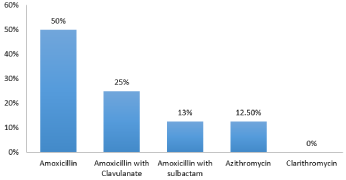
Figure 1: In the case of pharyngitis which antibiotic you would indicate?
As for the use of antibiotics in the treatment of tonsillitis, (Figure 2) 37,5% reported using amoxicillin, 25% made use of Penicillin G and Amoxicillin associated with Clavulanate, 12,5% reported using other medicines, such as amoxicillin Sulbactam.
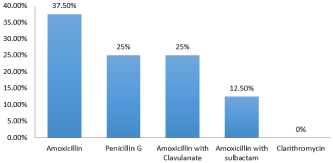
Figure 2: In the case of tonsillitis, which antibiotic would you indicate?
Related to the use of antibiotics in the treatment of bronchitis (Chart 3), 50% say they indicate Azithromycin, 12.5% refer indicate Amoxicillin with Clavulanate, Clarithromycin, Ciprofloxacin, and 12.5% refer not to use antibiotic for Bronchitis.
Regarding community acquired pneumonia (Figures 3 & 4), 37% stated that amoxicillin with clavulanate was indicated as a treatment, 25% indicated Levofloxacin, 12,5% Ceftriaxone, no interviewee would indicate Clarithromycin and 25% indicated other antibiotics such as amoxicillin with sulbactam and Cefuroxime.
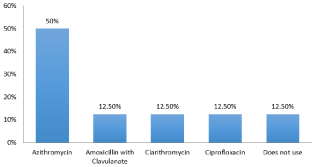
Figure 3: In the case of bronchitis, which antibiotic would you indicate?
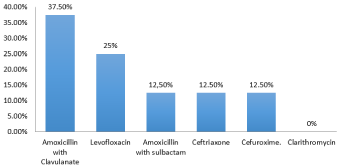
Figure 4: In the case of community-acquired pneumonia, which antibiotic
would you recommend?
Regarding the reason for the indecision of these drugs, respondents could indicate more than one alternative (Figure 5), 37, 5% would indicate low cost, 37,5% would indicate hospital availability, 75% for following a protocol.
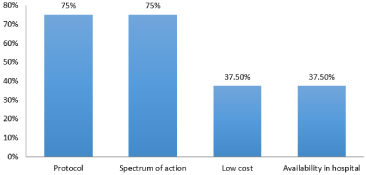
Figure 5: Why would you indicate these medications?
When questioning referred to behavior to avoid bacterial resistance (Figure 6), respondents could point to more than one alternative. 100% responded that proper use of antimicrobials only when indicated would be the best way to avoid the mechanism of resistance, 62% of practitioners responded that appropriate doses should be used, 50% responded that time should be respected between doses, and only 25% believe that a small-spectrum antibiotic should be used to avoid bacterial resistance.
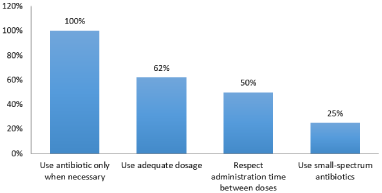
Figure 6: Use of antibiotic in relation to antibacterial resistance.
Discussion
The appearance of multiresistant microorganisms suggests the need for intervention in the pattern of antibiotic use. Knowledge of the prescription pattern is essential to support the review of clinical and teaching practices in the sense of promoting the rational prescription of antibiotics [6].
The use of antibiotics (appropriate or not) contributed to the emergence and spread of bacterial resistance and the recent use of antibiotics is, of course, a risk factor for invasive pneumococcal infection resistant to multiple antibiotics. Thus, it is essential that doctors and lay people avoid unnecessary use of these drugs [7].
In a study on antibiotic resistance, many factors for the use of antibiotics were raised, the following are worth highlighting: difficulties in clinically differentiating infections from viral etiology to bacterial ones, the false belief that prophylactic antibiotic use could prevent occurrence of complications, family pressure due to antibiotic prescription, lack of control in the sale of antibiotics, lack of knowledge about possible adverse events associated with inappropriate use of antibiotics, including impact on the increase of resistance bacterial infection [7].
Tonsillitis/pharyngitis is a frequent cause of symptomatology in adults and children, accounting for 1 to 2% of all medical consultations in the United States in 1968. On the use of medications to treat pharyngitis, most acute pharyngitis has a viral etiology; the use of antibiotics should be reserved for cases where the infection is caused by bacteria such as group A streptococcus. In a review of the literature from 1992 to 2002, penicillin (penicillin, benzathine, oral penicillin or amoxicillin) of choice for the treatment of group A streptococcal pharyngitis, corroborating the data from that survey where 50% of those interviewed proposed the use of amoxicillin as an election against pharyngitis.
In the treatment of tonsillitis, 37% of the respondents stated that they use amoxicillin, and in a study carried out in Portugal between December 2001 and January 2002, amoxicillin / clavulanic acid was the most individual medicine prescribed for indication of tonsillitis, 33.48% of the prescriptions for this indication [8].
According to ANVISA (National Agency for Health Surveillance - Brazil), the protocol for the use of antibiotics for both diseases continues to be Benzathine Penicillin (intramuscular), Penicillin Crystalline in severe cases (intravenous), amoxicillin (oral). In cases of sensitivity to penicillin, Erythromycin may be used.
As for bronchitis, in the acute form, the most frequently implicated agents (90% of cases) are viral (influenza B virus, influenza A, parainfluenza 3 and respiratory syncytial, coronavirus, adenovirus, rhinovirus). non-viral etiology in 5 to 10% of the cases and, generally, the responsibility of agents such as Bordetella pertussis, Mycoplasma pneumoniae and Chlamydia pneumonia [8].
Of the 15 respondents, 50% said they indicated azithromycin (macrolide), as a method of choice, 13% said they did not indicate any type of antibiotic, since the cause is usually of viral origin. According to ANVISA, the antibiotics used for the treatment of bronchitis are: amoxicillin - clavulanate; respiratory quinolones (levofloxacin, gemifloxacin or moxifloxacin); macrolides; secondgeneration cephalosporins. The treatment time of the reactions is 5 to 10 days, depending on the evolution and the antimicrobial used. There is a tendency to be treated for less time, when using respiratory quinolones and azithromycin [9].
Community-acquired respiratory tract infections are associated with high morbidity and mortality, becoming a serious public health problem [9]. In the case of pneumonia, a rigorous clinical and radiological examination is necessary. To this end, it is useful to use risk assessment methods, such as PSI (Pneumonia Severity Index) established by Fine et al. 37% of the doctors interviewed stated that they prescribed amoxicillin associated with clavulanate for the treatment of pneumonia. According to ANVISA, amoxicillin with clavulanate would be an alternative option in the treatment of pneumonia. The drugs chosen as the first option depend on the type of microorganism causing and the condition of the patient [10,11]. Regarding the indication of the drugs, 75% of the interviewees said that it was based on a protocol. As each health facility establishes its protocol, we had some divergences with respect to the prescription.
Conclusion
Through this study, it is concluded that doctors have a relatively satisfactory knowledge about the use of antibiotics in the treatment of respiratory diseases, however, it is necessary to clarify that in the absence of specific directives for prescription of antimicrobials in medical practice, and in the absence of epidemiological studies to guide these prescriptions can be an important factor for the growth of inadequate prescription of antimicrobials and consequent increase in the evolution of bacterial resistance.
Therefore, it is necessary to deepen new studies in the area for a better clarification and a protocol adequacy to be used.
References
- Corredera MA, Regalado RB, Barrios MC, Manchón EF, Mourelle JF, Roque EG, et al. Farmacología general. La Habana. 2002.
- Resistencia Antibiótica. (Internet). Médicos de Portugal. 2018.
- Goodman L, Gilman A, Bunton L, Chabner B, Knollmann B. Las bases farmacológicas de la terapéutica. México: McGraw-Hill. 2014.
- Organización Mundial de la Salud (Internet). Who int. 2018.
- Página Inicial de Anvisa - Anvisa (Internet). Portal anvisa gov br. 2018.
- Ramalhinho I, Gomes L, Filipe C, Cavaco A, Cabritac J. Padrão de prescrição de antibióticos no Algarve: características do doente e dispersão da terapêutica. Rev Portuguesa de Saúde Publica. 2015; 33: 207-221
- Bricks LF. Uso judicioso de medicamentos em crianças. Jornal de Pediatria. 2003; 79: S107-S114.
- Caldeira L, Remísio E, Antonio A, Aguiar P, Fonseca A, Vaz AF, Maria V. Prescrição de antibióticos para infecções do tracto respiratório em Portugal continental. Rev Portuguesa de Clínica Geral. 2004; 20: 417-448.
- Tratamento das infecções comunitárias e relacionadas à assistência à saúde diante da resistência microbiana. 2018.
- Fine MJ, Anbell JE, Yealy DM. Improving the appropriateness of hospital care in community acquired pneumonia: a predictive rule to identify patients at low risk for mortality and other adverse medical outcomes. N Eng J Med. 1997; 336: 243-250.
- Agencia Nacional de Vigilancia Sanitaria. ANVISA.